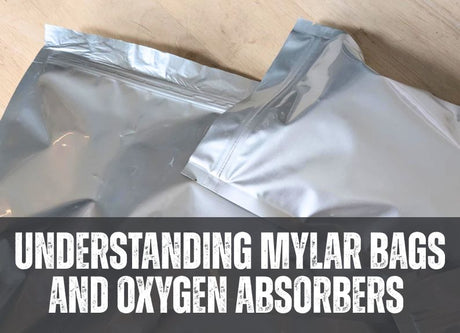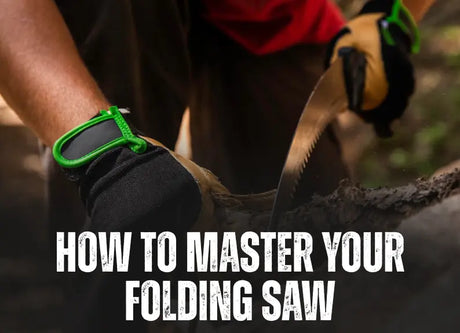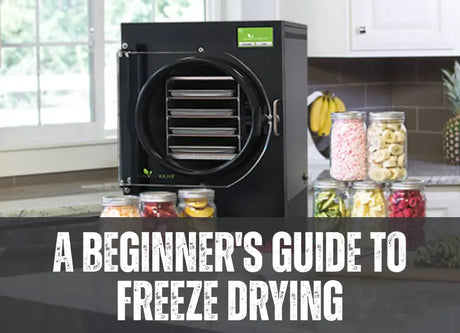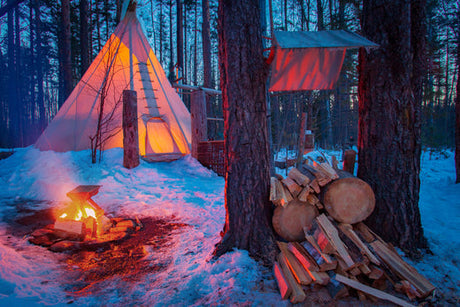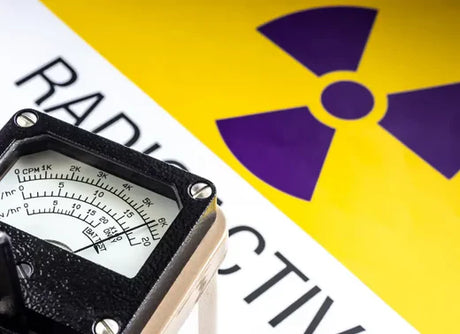When you’re new to preparedness, it can be difficult to know where to start. A lot of time is wasted by not taking strategic steps in your prepper skill development. We’re here to kickstart your emergency preparedness plans with your critical first steps.
Start the process of training for a firearms license.

Each country has different regulations on acquiring firearms for hunting, self-defence, or collecting. The language and regulations will influence the length of time you will wait between initiating the process and utilizing your firearm. A key part of your preparedness planning is ensuring that you are able to hunt as efficiently as possible. Learning how to hunt wild game is a key skill set that you should try to develop before it becomes necessary. If you live in an area where firearms are not permitted, learning to use a crossbow or compound bow will be a critical part of your journey.
If you’re based in Canada, this process can take some time. Initiate the steps to acquiring your Possession and Acquisition Licence by completing the Canadian Firearms Safety Course (CFSC). This course isn’t offered all the time in many provinces; you may have to wait until the next course announces registration, depending on your location and the number of instructors. In Canada, you will need to complete both a written and practical exam in order to get your PAL. For handguns and specialty guns, you will need to complete training for the Restricted Firearms Safety Course and complete an additional restricted written and practical test. In addition, for a restricted license, you must prove that you are a collector or are registered at a handgun shooting range in order to buy restricted guns.
To apply for your permit in Canada there are additional requirements such as a background check, criminal record check, and a 28-day minimum processing period. You will be asked to provide two references who can talk about your mental health, addictions, and domestic abuse history if any. For restricted weapons, you will need to register them with the police before taking them home, so planning ahead is crucial.
In the U.S., there are limited restrictions for owning and purchasing a firearm. While different states will have different additional rules, the federal laws require only an instant background check which may look at your addictions and domestic violence history as well as criminal record and immigration status. Many Americans have acquired firearms without any background check––it is critical to know which rules your state enforces.
Developing strength and stamina is critical for every prepper.
Your fitness will matter in the post-grid-down society. Strength, endurance, and cardiovascular health will all play a key role in your ability to survive. In a world of survival, your ability to move quickly and quietly can be the difference between life and death. Learn more about strength training for preppers on our blog.
It is critical to know that all exercises have modifications that make them accessible to all bodies at various stages of comfort and ability. Starting by doing the version of the exercise that fits your level of fitness is key for avoiding injury. Start at your own body weight and slowly add weight as you progress over time. The only bad day to start focusing on your strength and stamina is tomorrow.

Workouts that promote cardiovascular health include running, swimming, jogging, and bike riding. Cardio is a critical part of any exercise plans and is essential for good overall body health and function. These exercises promote lower blood pressure, reduced arthritis pain, an increase of endorphins, and overall stamina.
To avoid injury, incorporate stretching into your exercise routine. A healthy body is limber and able to tackle a wide range of physical activities. While getting jacked is what we all think about when engaging in physical activity, it is far more important to be strong and agile. The body is a complete system that will work together to keep you alive if you treat it well.
Compound exercises for a full-body workout.
Compound exercises are an efficient way to build strength, as they target multiple muscle groups simultaneously. These exercises aren't necessarily about how a particular muscle looks, they are strictly designed to make you stronger.
A squat focuses on the muscles of the hips, legs, back, and core. It also promotes flexibility in the knees and ankles. For beginners, your body weight will be enough to build strength in the lower body. As you progress, you can start to add weight. Do not progress unless you can easily do 2-3 sets with at least 10 reps, or you can risk injury.
Key tips for a successful squat are:
- Keep your knees behind your toes
- Keep a straight spine to avoid lower back injury or strain
- Keep your arms outstretched for balance
-
Chest and head up and looking forward

2. Pull Ups
Pull ups are difficult at first, but with training comes reward. For beginners, start working on exercises that will build the muscles in your back, core, arms, and shoulders that will help you do a full bodyweight pull up. In a survival setting, being able to lift and carry weight without fatigue or injury is a must. Whether you’re carrying your gear in a bug-out situation, carrying your family if they become injured, or bringing your hunted game back to your camp––there is an advantage to having strength.
Exercises to train for pull ups, which can be modified for your level and needs, include:
- Push ups
- Rows
- Planks
- Chin ups
- Band-assisted pull ups
-
Negative pull ups
Deadlifts, barbell hip raises, and bench presses are all great compound exercises that involve adding weight. For beginners, these workouts can feel daunting, but they are a great way to increase your body’s strength and stability. After doing bodyweight workouts until they feel consistent and easy, adding weights will progress your training. Joining a class or having a trainer will help you build proper form while doing these exercises, so that you can work independently.
Build your everyday carry bug-out bag.
An everyday carry or (EDC) is a bag that contains all your most basic survival items. This is a gray man survival strategy that is essential for preparedness. In addition to a bug-out bag for your home and vehicle(s), this bug-out pack is one that you can carry with you at all times.
Our 5 essential components of an EDC:
-
Paracord
Especially SurvivorCord, if possible, which includes fishing line, waxed jute tinder cord, paracord, and kevlar utility line.
-
Utility pocket knife
Part self-defence and part useful tools, a utility knife is a critical survival tool.
-
Battery charging pack for devices
If you want to ensure your device is usable until the grid goes fully down, having a spare battery pack can make a world of difference. This is also important to have in your car in case of an emergency.
-
Cash
If the grid goes down, how will you pay for items? We are always surprised by the number of people who do not carry cash. Always having cash in your wallet, in a world of plastic cards, will be an advantage.
-
Flashlight
Lights go out, you’re covered. Electricity is something we take for granted. Having a flashlight on you at all times can make a big difference in your survival.
Learn to stockpile food and water.
Easily one of the most important parts of becoming prepared for anything is learning how to stockpile food and water. Scarcity will be the leading cause of violence and death in a post-apocalyptic or grid-down world. Even for emergencies such as natural disasters, many families remain completely unprepared. At the very minimum, you should have enough food to feed yourself and your family for two weeks at all times. As you progress in your preparedness, you can strategically stockpile goods and supplies for 30 years or more.
Focus on stockpiling items which will not require precious energy to prepare, as resources will be at a premium. Pre-packaged foods which require only water to make are an easy way to get your required nutrition quickly and efficiently.
Water is and will continue to be a critical resource for survival. In North America, many of us are able to take clean water for granted. In a post-collapse world, no one will be working at the water treatment plant to deliver water to your taps. Learning how to effectively find and sanitize water is necessary for survival.
Learn techniques for stockpiling food and water:
- How to stockpile food strategically
- Bulk powdered food to stockpile immediately
- How to preserve and stockpile your own food
- A prepper’s guide to clean water
-
5 Year Survival Food Supply: $7,000 and 2.5 MILLION Calories
- Top 10 Freeze Dried Foods (Long Term Food Storage)

The top 4 items to stockpile immediately.
-
Rice, grains, beans
These dried foods are cheap and accessible and will last indefinitely when stored properly.
-
Freeze-dried foods
When stored correctly, freeze-dried foods will last for a long time and retain their nutritional value. You can effectively freeze dry anything from meat to milk, making it the most valuable method for preserving foods.
-
Water
Stockpiling couples for sanitizing water as well as having large storage vessels on-hand is essential for you to thrive in the collapse. The Berkey Filtration system, LifeStraws, and the The MSR Water Purification kit are all great methods for purifying water. In addition, learning other methods such as building a solar still or making your own charcoal will be crucial learning for the bushcraft beginner.
-
Medicine and medical supplies
In the post-collapse, you might be the closest thing you’ll find to a doctor, which means learning first aid as well as stockpiling key medicines that may be necessary for your survival. Stockpile painkillers like ibuprofen or other NSAIDs, antibiotics, anti-anxiolytics, skin staplers, tourniquets, bandages, pulse oximeters, caffeine pills, ammonium, benadryl, vitamins and minerals, and whatever prescription medications possible.
Make an emergency plan with your family.

Having a bug-out plan or evacuation plan is a critical step in your preparedness. Whether you want to build a bunker or not, emergency planning is good practice for everyone, everywhere. No matter how well stocked your home is, there is always a chance that you will have to flee or evacuate at a moment’s notice. This is where a well stocked bug out bag becomes a critical resource.
For a comprehensive breakdown on bug out bag strategies, check out:
- The Ultimate Winter Bug-out Bag
- Essential Gear Checklist for a 3-Season Bug-Out Bag
- 50 Items For Your Survival Kit and Bug Out Bag
- 13 Items You Will Want in Your Bugout Bag
Essential items for your emergency kit

-
Water purification
Having access to clean water free from chemicals, parasites, and bacteria should be your top priority in building your emergency plan.
-
Shelter
Whether you pack a tarp or a tent, having shelter is critical. If you live in colder climates, such as Canada, be sure to consider shelter options for all seasons––which should include a lightweight hot tent and portable wood stove.
-
Important documents
Having your passports, birth certificates, and other identification together is crucial for your emergency planning. You can also include land titles, mortgages, and important health records.
-
Navigation basic
Learn how to orient yourself on a map and utilize a compass.
-
Shortwave radio
Get important information if anyone is broadcasting.
-
Flashlight
Various styles, including a crank-charged flashlight and headlamp.
-
Generator
Can power fridges, radios, flashlights and lamps, and more.
-
Items for bartering
Can include cash, gold, silver, precious metals and gems, coffee, food, etc.
-
Self-defence
Whatever is permissible in your specific location
-
Tools
There are a variety of tools that will be incredibly valuable to your survival, such as axes, knives, fishing rods, paracord, and more.
Focus on your home security.
Fortifying your home is a critical step in protecting yourself and your family. We think of the home as a comprehensive defence system to deter intruders at every stage.
For further learning check out these resources:
Some essential tips for home defence include:
-
Security systems and cameras
-
Dogs who are well-trained
-
Signage that acts as a deterrent
-
Remove obstructions where intruders can hide
- Never actively post your vacation on public social media
Build your off-grid solutions and develop fuel storage.
Generating heat and electricity is a key part of your survival plan. One of the ways that preppers are often portrayed is their obsession with off-grid bug-out locations and bunkers. This is for a reason—it’s smart. Having a source of electricity is not only critical for your survival but also a necessity for thriving in a grid-down world. All preppers should start the process of developing off-grid solutions or backup power sources as part of their survival plans.
In colder climates, such as Canada and the upper half of the United States, winter also makes it dangerous to live without a reliable heat source. Fuels such as wood, propane, diesel, kerosene, and gas will all go a long way when they are no longer widely available. In addition, stocking wool blankets, warm clothing, and proper outerwear is a crucial part of your winter preparedness.
An off-grid solution can include generators, solar panels, wind energy, geothermal energy, and wood-burning stoves.
Get to know your community.

Get to know the place you live and the surrounding area. Being ready for anything also means understanding efficient and discreet ways of moving through the territory around you, whether it’s urban or rural. Understand the back roads, in-roads, and evacuation routes, study and memorize points of strategic interest for scavenging and shelter, and understand the people in the area you live in. Identifying a threat ahead of a disaster will help keep your family safe.
Consider where you live in the world and how easy it will be to defend your home and property, evacuate in a disaster, or bug out in a grid-down scenario. Considerations such as population density, access to water, and discretion should all factor into where you live in the world.
Build a library of bushcraft resources.
A prepper library will include information on foraging, survival, food growing, maps (topographical, railways, roads, and trails), how to process animals, food growing techniques, first aid, how to build shelters, automotive repair, blacksmithing, and more.
These resources are an incredible tool in your preparedness arsenal. Reading and studying these books will increase your chance of survival as well as teach you invaluable skills for being self-sufficient.
This is only the beginning of your prepping journey.

We deep dive into these strategies on our youtube channel as well as our blog. This is a primer for advanced skills and strategies that you can start to develop. Being prepared for anything is how you survive and thrive in any environment. Get out in nature and start to hone your skills today. The only wrong time to start is tomorrow.




